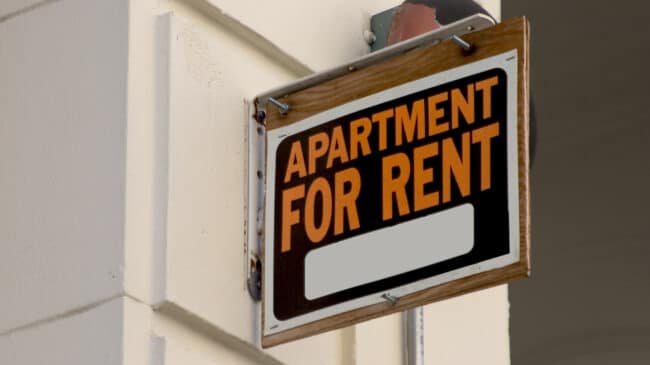On July 16, President Joe Biden called on Congress to ensure nationwide rent stabilization for this and the next two years. The goal is to halt annual rent increases of more than 5% annually by landlords who oversee 50 units or more. This law, if enacted, would affect 20 million units—which is half of the rental market. Landlords who don’t comply would lose the tax write-off of depreciation accumulated by their units—a tax write-off created to spur the development of multifamily housing. New construction and substantial renovation or rehabilitation would be exempt, but we don’t yet know what qualifies.
In the face of an affordable housing crisis and rent increases in much of the country, the pressure for policymakers to act is great. However, a policy that creates new problems while attempting to fix others should be avoided.
That has always been the chief problem with rent control: it stops rents from rising but creates other problems that make it an overall poor policy. President Biden’s proposal is not traditional rent control, which tends to have many controls on when and how property owners can change the rents they charge, but it will have similar distortionary effects. And it certainly fuels the fire of advocates for state and local rent control proposals, whose activism has been on the rise.
The current housing crisis is primarily caused by a nationwide housing shortage. Among other factors, the fallout from the 2008 subprime mortgage crisis has resulted in the worst decade for housing construction since the 1960s. Fannie Mae estimated that in 2019 the U.S was 3.8 million housing units (both rental and for sale) short. The COVID-19 pandemic only worsened the situation through materials shortages, though rent increases have recently slowed as developers respond to price incentives.
The primary cause of price hikes is a shortage of housing supply. Demand is simply outstripping affordable and available housing units. Effective policy should focus on adding housing units in the private market to meet demand. Economic research suggests that rent stabilization laws (a derivative/soft form of rent controls), like Biden’s, reduce the supply of housing, thereby exacerbating the problem.
Rent control policy’s effects
Most of the research related to this is on rent control rather than rent stabilization like Biden’s proposal, but the effects are likely similar. As with much economic research, rent control policy outcomes can be hard to assess. Economics 101 tells us that in a free market, rent control’s price cap decreases profitability, inevitably leading to less rental housing being available.
However, some studies disagree. This article by Rutgers professor Mark Paul goes over many studies that find positive effects of rent control, mainly for those people who live in rent-controlled units whose costs are frozen. The research is clear that some people do benefit from rent control.
However, a 2012 University of Chicago survey of a diverse panel of economists found that 81% agreed that local rent control ordinances have not positively impacted the amount and quality of rental housing. A very recent comprehensive survey of the effects of rent control concludes:
[A]lthough rent control appears to be very effective in achieving lower rents for families in controlled units, its primary goal, it also results in a number of undesired effects, including, among others, higher rents for uncontrolled units, lower mobility and reduced residential construction. These unintended effects counteract the desired effect, thus, diminishing the net benefit of rent control.
The Brookings Institution has also concluded, “Rent control appears to help affordability in the short run for current tenants, but in the long-run decreases affordability, fuels gentrification, and creates negative externalities on the surrounding neighborhood.”
San Francisco is a great example with long experience using rent control. A study by Stanford University researchers in 2017 found:
[Rent control] reduced their supply of available rental housing by 15%, by either converting to condos/TICs, selling to owner-occupied or redeveloping buildings. This led to a city-wide rent increase of 7% and caused $5 billion of welfare losses to all renters. … Taken together, we see rent control … increased property investment, demolition, and reconstruction of new buildings, conversion to owner-occupied housing and a decline in the number of renters per building. All of these responses lead to a housing stock which caters to higher income individuals. Rent control has actually fueled the gentrification of San Francisco, the exact opposite of the policy’s intended goal.
After President Biden’s rent stabilization plan announcement, several housing experts and economists released warnings concerning the proposed policy. Bob Brokesmit, president and CEO of the Mortgage Bankers Association, called it a “counterproductive policy idea that ultimately harms renters by distorting market pricing, discouraging new construction, and degrading the quality of rental housing.”
The Washington Post quoted Jason Furman, a chief economist in the Obama administration, saying, “Rent control has been about as disgraced as any economic policy in the tool kit. The idea we’d be reviving and expanding it will ultimately make our housing supply problems worse, not better.”
Aware of these negative effects, most states have taken direct action against rent control and stabilization ordinances on the local level.
Figure 1 color codes the United States by the legal status of rent control by state. Considering the overwhelmingly unpopular nature of rent controls and similar policies, the proposed federal rent stabilization is likely to encounter substantial pushback.
Figure 1: Legal Status of Rent Control by State

Alternatives to rent control
Many U.S. cities provide adequate supplies of affordable rental housing without rent control. Average rents in some large, growing cities like Nashville, Houston, and Las Vegas have been declining, while rents in other cities like San José, Minneapolis, and Jacksonville have skyrocketed. The difference is the former are aggressively allowing new housing to be built and the latter are restricting new housing supply.
What causes rents to increase faster than wages, in part, are local government restrictions on housing supply that drive up costs. Policies and approaches that allow housing supply to meet demand inevitably keep housing more affordable. Local governments need to permit sufficient housing construction and also allow for denser development and redevelopment.
About 75% of all “residential” zoned land in the United States is currently zoned for the exclusive development of single-family detached homes. Aside from converting structures to allow for denser occupancy, thinking long-term and incentivizing local governments to reform their zoning and land use plans to benefit multi-family development would be a better use of federal attention on housing policy. Also, allowing current property owners to add accessory dwelling units like granny flats or basement apartments, or rebuilding on their lot with a duplex instead of a single home can dramatically increase supply without dramatically changing the character of a neighborhood.
Rather than sweeping price controls, one simple way to increase housing supply is to address the multiple categories of commercial real estate that are now underutilized and ripe for conversion to residential uses. Hotels, retail stores, and shopping malls are market sectors currently shrinking due to the COVID-19 crisis and the rise of online shopping. Local governments could take advantage of this trend by rezoning commercial properties to permit residential use, allowing new housing stock to be added much more easily and inexpensively than through ground-up construction. The resulting supply could help push down rents in many parts of the country without rent regulation.


